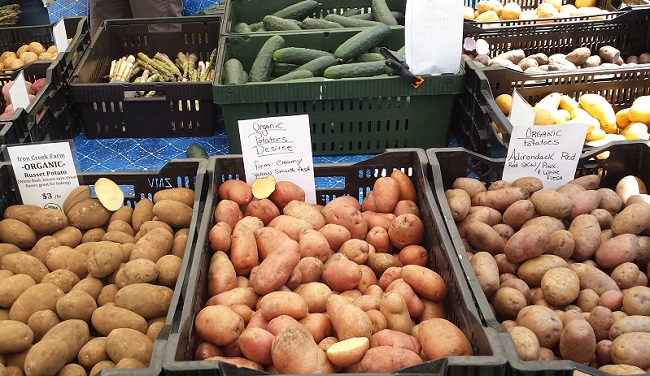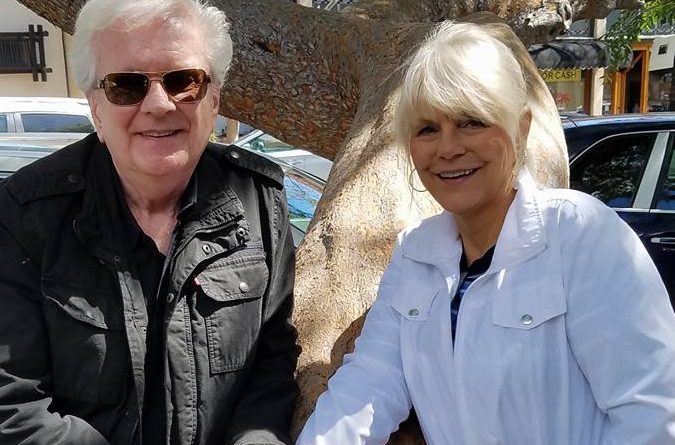Life After Sunrise with Steve and Johnnie
June 3, 2018 – A long time ago on a radio station far, far away…
![]() …there was a late night program called “Life After Dark with Steve and Johnnie”–Steve King and Johnnie Putman, to be It was on a station that I sometimes refer to as “Gargantua Radio down the dial.” As a matter of fact, I happened to work at that same station, doing various things, including hosting a program called “Let’s Talk Gardening.”
…there was a late night program called “Life After Dark with Steve and Johnnie”–Steve King and Johnnie Putman, to be It was on a station that I sometimes refer to as “Gargantua Radio down the dial.” As a matter of fact, I happened to work at that same station, doing various things, including hosting a program called “Let’s Talk Gardening.”
But I digress.
Steve and Johnnie had one of the toughest jobs in radio (though they are likely to deny it), which is to keep people entertained all night long–from roughly 11:15 p.m. to 5:00 a.m., five nights a week. Not only did they do that successfully for around 27 years, they became the #1 overnight show in Chicago. You could say they were also number one in a lot of other markets, because people all over the country listened to their show, thanks to the amazing reach of WGN Radio.
Part of what they did best was bring in musicians of all types and stripes, many of whom would perform on air in the middle of the night. This was and is, by the way, a talk radio station, so the fact that Steve and Johnnie were able to buck that trend for so long is a miracle in itself.
They became–and remain–friends with all kinds of performers, many of whom they welcomed to the show repeatedly. One of their most special relationships was with the legendary guitarist Les Paul, who didn’t exactly invent the electric guitar, but was probably responsible for its unique success in the middle of the 20th century. He is, in fact, the only person to be included in both the Rock and Roll Hall of Fame and the National Inventors Hall of Fame.
Steve and Johnnie first interviewed Paul in 1991, when, at the age of 76, he was entering his final act as an entertainer. But what an act it was. And Steve and Johnnie had front row seats.
Over the next seventeen years, he appeared countless times on their show, usually by phone from his home in New Jersey. They were part of several tributes to Paul, including Muriel Anderson’s All Star Guitar Night tribute in 2003 and the opening of Les Paul’s House of Sound at Discovery World in Milwaukee in 2008.
Les Paul died in 2009 at the age of 94. In 2016, Steve and Johnnie published their book, A Little More Les, Conversations photos and memories from a treasured friendship with the legendary Les Paul. It’s a book written with a lot of heart and a lot of love, and if you care anything about American music or Chicago radio, you should pick up a copy.
Peggy and I are happy to have Steve and Johnnie on the show today, not just to rehash the past, but to talk about sustainability. Huh? Yup, Steve wrote to me to ask if I knew of the work that Taylor Guitars was doing. They are behind something called The Ebony Project, which is about Taylor’s efforts to cultivate a more sustainable future in the African country of Cameroon through a scalable replanting program.
Many of the woods traditionally chosen to make acoustic guitars — ebony, mahogany and rosewood, for example — come from tropical regions of the world, often in developing countries. More than ever before, those forests are at risk due to a range of factors, including rising global consumption patterns, land conversion for large farms and plantations to feed export markets, and too often, a lack of good governance.
While we’re discussing that, we just might get into the idea of aluminum guitars, something that we discussed last year when my old friend Carl Zimring was on the show to discuss his book, Aluminum Upcycled: Sustainable Design in Historical Perspective. In an entire chapter that he devoted to aluminum guitars, this caught my eye.
Three pounds of aluminum sold at auction in 2007 for $312,000 not because of he material properties of the metal, but because the metal was part of a guitar owned and played by the Grateful Dead’s Jerry Garcia in the mid-1970s. The chance to possess an instrument owned by a dead rock star escalated the material’s price within the designed good far higher than its market price as scrap. The sale was notable enough to be mentioned in the New York Time’s obituary of the man who build the guitar, the California-based designer Travis Bean.
By the way, I would be remiss if I didn’t mention that I had the privilege–and the challenge–of filling in for Steve and Johnnie more than a few times at Gargantua Radio down the dial, and almost always with my sweetie Kathleen Thompson. That’s partly how I know what a difficult job it was. That overnight schedule can sure mess with you. Seriously.
You can follow Steve and Johnnie on their website, their blog and their Facebook page, The Steve and Johnnie Show. They’ll be celebrating what would have been Les Paul’s 103rd birthday on Saturday, June 9 at the Woodstock Public Library, 414 W. Judd, Woodstock, IL, 60098, from 1-2:30 p.m. There will be a presentation and a book signing of A Little More Les.
What’s in season? The ILFMA can tell you.
If it’s June, it must be farmers market season in the Midwest. Which is why Janie Maxwell, executive director of the Illinois Farmers Market Association (ILFMA), is back on The Mike Nowak Show.
 If you want to know what’s healthy, fresh and locally available right now, you need to download the What’s in Season app from the ILFMA website, which lists where to find farmers markets by zip code.
If you want to know what’s healthy, fresh and locally available right now, you need to download the What’s in Season app from the ILFMA website, which lists where to find farmers markets by zip code.
Janie says that if you head out to a farmers market, you can start looking for strawberries, while asparagus, greens and root vegetables continue to be available.
She also says that thanks to expansion of the cottage food law in Illinois, farmers/cottage food participants will be able to provide tomato based products from their own sites. They will also have markets that accept SNAP/Link on the ILFMA website in the next two weeks, so Link users will have the most up to date information shortly.
She writes, “It is an exciting time of year!” Peggy and I couldn’t agree more.


